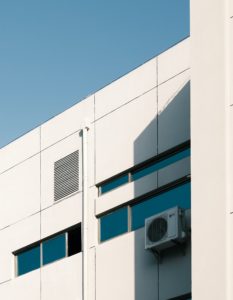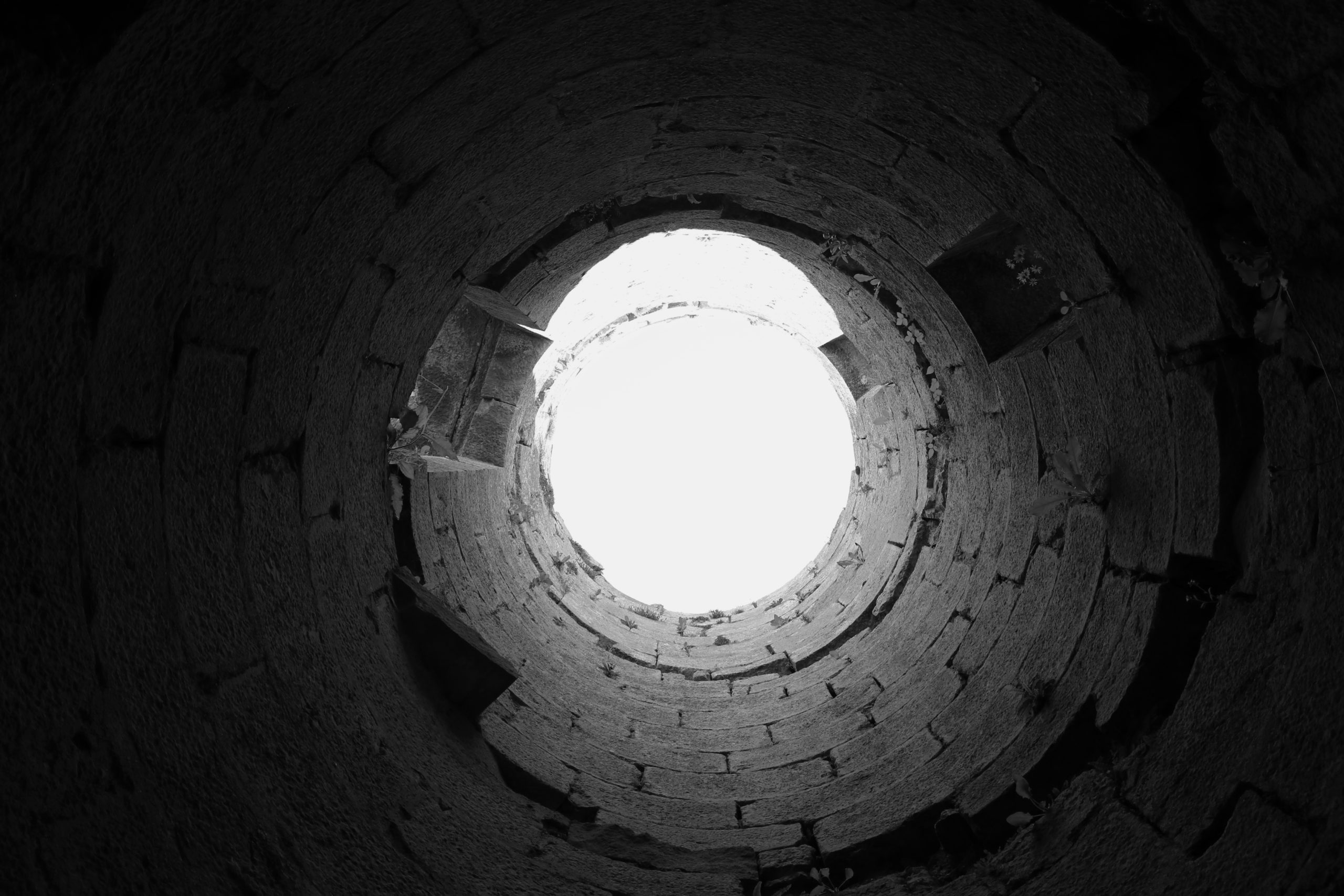Why is it important?
Between 1971 and 2019, the world’s total energy supply has increased 2.6 times. We are producing and consuming more and more energy. Fossil fuels accounted for over 80% of energy production in 2019, as in previous years, with oil, coal and gas remaining the most important energy sources. When it comes to electricity, coal is the main contributor globally. Consuming energy and more precisely electricity today still means using fossil fuels[1].
Residential buildings alone account for 22% of global energy consumption, and 17% percent of greenhouse gas emissions[2]. Construction is a sector where massive improvements in terms of energy consumption and emissions must be made. Keeping in mind that most energy comes from fossil sources, and that energy demands are continuously rising, the priority must be to save energy wherever it is possible. Sobriety is a key principle. Systems incorporated in construction or in renovation that lead to major reductions in a building’s energy expenditure must become the norm. One of such systems is the earth-air heat exchanger.
What is the solution?
Earth tubes – also known as ground-coupled heat exchangers, Canadian well, Provencal well, earth warming tubes, or solar chimneys – are a passive, natural ventilation, low-tech solution for cooling a building in summer and heating it in winter. This well proven technique has been in use for centuries, since the Persian and Roman Empires.
During the warm season, the ground is cooler than the ambient air. During the cold season, the opposite is true. This is due to the almost constant temperature of the ground from a certain depth (around two meters). Thanks to a system of underground tubes buried in the ground, earth tubes use this natural characteristic to heat or cool the air circulating in the pipes. This air will then ventilate the building.
Earth tubes generally consists of 5 components: an air intake with a filter and a grid ; an external duct buried in the ground (at a depth of between 1.5 and 3 metres) for 30 to 50 metres, with a slope of between 1 and 3% to drain off condensation and limit the risk of mould; a by-pass damper (a small mechanical part that switches from hot to cold without human intervention); a manhole cover (a small plate, similar to the one in the sewer, that allows you or your technician to check your installation); and a ventilation system (simple, double flow, insufflation) to distribute the air throughout the building. (3)
Earth tubes are useful as long as the pipe is installed in a climate where the ground temperature is adequate, has a large enough diameter, is long enough, is buried deep enough, is able to exclude radon (a toxic gas that can be found underground) and is installed in such a way as to minimise potential condensation problems. The deeper earth tubes are buried, the better they perform. The size of the ducts must be calculated according to the size of the building, the desired air flow rate, the nature of the soil, the geographical area and the type of installation chosen.
Earth tubes can be used in collective infrastructures, offices, and residential buildings, as well as agricultural installations such as greenhouses. Earth tubes are preferable for new buildings, as burying the pipes and installing the ventilation system requires major work. Planning well in advance will reduce logistical constraints.
These earth tubes offer a sustainable alternative to reduce or eliminate the need for conventional compressor-based air conditioning and heating systems in certain climates. On top of that, they provide the added benefit of controlled, filtered, temperate fresh air intake, which is especially valuable in tight, well-weatherized, efficient building envelopes.
Key actions
-
#1 Assess the situation, location and system
Certain hot and humid climates present only small benefits for such systems. In the same way, certain ground types, whether they are too difficult to excavate or simply too dry and hot, present contraindications to the installation. Assess the costs and benefits of installing such a system on the long term. Assess the environmental impacts and mitigate them.
-
#2 Carefully choose the materials and design
When designing an earth tube system, the material of the tubes must be carefully selected to best suit the needs of the building. Larger buildings tend to use concrete pipes, and smaller buildings plastic tubes, with varying diameters. The system can benefit greatly from a slight slope to circulate condensation water to a drain, avoiding moisture in the tubes. Angles should also carefully be designed, with sharp turns to be avoided as they break the circulation of the air.
-
#3 Monitor environmental indicators
Measure the temperature of the air leaving the tubes compared to the temperature of the outside air. Monitor air humidity and radon concentrations React quickly if abnormal results are noticed as humidity (moisture) and radon might lead to serious health issues.
-
#4 Cleaning and maintenance
Depending on the size of the system, training and hiring someone responsible for the monitoring and maintenance of the earth tubes can be beneficial. If needed, the ducts are to be cleaned and the system maintained through its natural wear and tear (which should be minimal if properly installed). Despite the protective measure, leaves and animals can get into the ducts. In such cases, having someone ready to intervene or hiring a professional for the occasion can be of great use.
To consider
Potential co-benefits
- Reduction of energy expenditure
- Reduction of operating costs of buildings
- Potential performance certification of the building
- Provide controlled, filtered, and fresh air
Success conditions
- Soil to bury the tubes is preferred to be dense and damp, with considerable shade.
- Climate must be temperate, with a seasonal variation of temperatures.
- System needs to be inspected and treated to prevent mold colonization.
- Vents need to be secured to prevent insects and animals to enter the system.
- Filter is preferred to guarantee the quality of the air entering the building.
- Tubes themselves need to be of sufficient diameter and length.
Prerequisites and special features
- Be installed during the construction of the building.
- Not be effective for cooling and dehumidifying buildings in hot humid climates.
- The higher the ambient temperature of the earth, the less effective the system will be for cooling.
Potentials risks
- If humidity and associated mold colonization is not addressed in system design, occupants may face health risks.
Point of attention
Not all regions and sites are suitable for earth-air heat exchangers. Conditions which may hinder or preclude proper implementation include shallow bedrock, high water table, and insufficient space, along with heat and humidity of climate.
Tools and goods practices
-
Earth tubes, Installation and commissioning, Grenelle Environnement, 2015
(in french) This guide, from a government-initiated program in France, is tailored to professionals in the field of construction. It aims to provide them with all the resources and information about earth tubes. The guide provides great depths of knowledge on earth tubes and goes into all the technical specificities of their installation.
Find here -
Earth Tubes Design, from Home in the Earth, 2012
This in-depth guide provides all the technical details about the installation of an earth tubes system. It tackles common issues such as humidity and insects, but also provides all the information on material, length, diameter, depth, layout and other specificities of the system.
Find here -
Earth tubes: the solution for naturally ventilating your home, 2022
(in french) This fact sheet gives an overview of how earth tubes work, along with important parameters to consider when thinking about installing such a system. It lists benefits and optimal situations for their installation.
Find here -
My Earth Tube Story, from Green Building Advisor
Malcolm Isaacs shares his mistakes and considerations going through the process of installing earth tubes for his house in eastern Canada. He concludes and shows that the system is cost effective and very satisfying to use.
Find here
To go further
-
The cooling and heating potential of an earth tube system in buildings, Lee & Strand, 2008
This research article presents a module for the simulation of earth tubes. It uses the model to investigate the effect of pipe radius, pipe length, air flow rate and pipe depth on the overall performance of the earth tube under various conditions during cooling season. It concludes that whether or not an earth tube is beneficial is heavily dependent on the climate of the location.
Find here
White roofs

Heating and air conditioning

Sources
(1) International Energy Agency, World Energy Balances, 2022. Read here
(2) UN Environment Programme, Global Status Report for Buildings and Construction, 2020. Read here
(3) Choisir.com, Earth tubes: the solution for naturally ventilating your home, 2022. Read here (in french)
(4) Government of Canada, New Energy Efficient Way to Heat and Cool Buildings, 2018. Read here
(5) Qualico, BUILDING FOR SUSTAINABILITY AT EPCOR TOWER, 2021. Read here
(6) ADEME, Eco-responsible at the office, 2020. Read here
(7) M.S. Sodha, A.K. Sharma, S.P. Singh, N.K. Bansal, Ashvini Kumar, Evaluation of an earth—air tunnel system for cooling/heating of a hospital complex, Building and Environment, Volume 20, Issue 2, 1985, Pages 115-122, ISSN 0360-1323, Read here
(8) Earth Rangers center for sustainable technology, HVAC Earth tubes, Accessed 2023. Read here
(9) Green energy futures, How earth tubes help save the Epcor Tower $50,000 a year, 2013, Read here
(10) Grobler, J., Conradie, D. C., & Van Wyk, L. V. (2019). Evaluating the efficacy of solar chimneys for heating and cooling: A case study., Worklist;22356 Alive2Green. Read here
